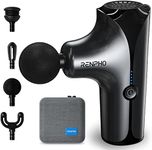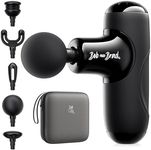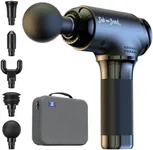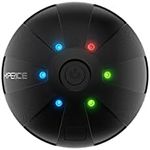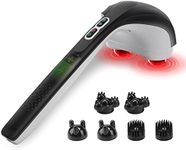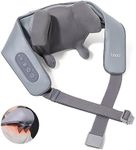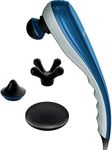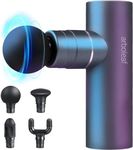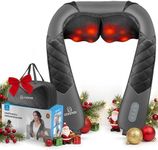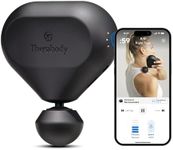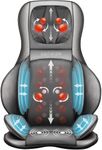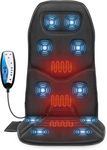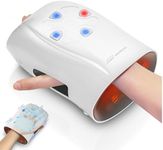Buying Guide for the Best Mini Massagers
Choosing the right mini-massager can make a big difference in your comfort and relaxation. Mini-massagers are designed to be portable and easy to use, making them great for quick relief at home, at work, or while traveling. When picking a mini-massager, it's important to think about how and where you plan to use it, what kind of massage you prefer, and how easy it is to handle and maintain. Understanding the key features will help you find a device that fits your needs and lifestyle.Massage TypeThe massage type refers to the way the mini-massager delivers its soothing effect. Common types include vibration, percussion, kneading, and rolling. Vibration is gentle and good for general relaxation, while percussion offers deeper, more intense relief for sore muscles. Kneading and rolling mimic the hands of a masseuse and are great for working out knots. If you want a light, relaxing massage, go for vibration. For deeper muscle relief, percussion or kneading might be better. Think about whether you want to use it for relaxation, muscle recovery, or both, and choose the type that matches your needs.
Portability and SizePortability and size determine how easy it is to carry and use your mini-massager. Smaller, lighter models are easy to slip into a bag or purse, making them ideal for travel or office use. Slightly larger models may offer more power or features but can be less convenient to carry around. If you plan to use your massager mostly at home, size may not matter as much. For on-the-go use, look for compact and lightweight designs.
Power SourceMini-massagers can be powered by batteries, rechargeable batteries, or sometimes by plugging into a wall outlet. Battery-powered models are very portable but may require frequent battery changes. Rechargeable models are convenient and eco-friendly, but you need to remember to charge them. Plug-in models usually offer more consistent power but are less portable. If you want maximum portability, go for battery or rechargeable options. For home use, a plug-in model might be fine.
Intensity LevelsIntensity levels refer to how strong or gentle the massage can be. Some mini-massagers have just one setting, while others offer multiple levels or adjustable speeds. If you have sensitive muscles or want a gentle massage, a lower intensity is best. For deep muscle relief or sports recovery, higher intensity settings are useful. If you want flexibility, look for a model with adjustable intensity so you can customize your experience.
Attachments and Massage HeadsSome mini-massagers come with different attachments or massage heads designed for specific areas or types of massage. For example, a round head might be good for general use, while a pointed head targets deep knots. If you want to use your massager on different parts of your body or for different needs, look for a model with multiple attachments. If you just want simple relief, a single head may be enough.
Noise LevelNoise level is how loud the massager is when in use. Quieter models are better for use in shared spaces, at work, or when you want to relax without distraction. Louder models may be more powerful but can be disruptive. If you plan to use your massager in quiet environments, look for one that is specifically described as low-noise or whisper-quiet.
Ease of Use and CleaningEase of use covers how simple the massager is to operate, including button placement and grip comfort. Cleaning is also important, especially if you use oils or lotions. Some models have removable, washable heads or covers, making them easier to keep hygienic. If you want a hassle-free experience, choose a massager with intuitive controls and easy-to-clean parts.
